Grow Peppers Indoors Small Space? Absolutely! Imagine plucking fresh, vibrant peppers right from your windowsill, even if you’re living in a cozy apartment with limited outdoor space. It’s not just a dream; it’s a deliciously achievable reality! For centuries, people have cultivated plants indoors, from ancient Egyptians growing herbs to Victorian-era parlors overflowing with ferns. This tradition continues today, fueled by our desire to connect with nature and enjoy fresh produce, regardless of our living situation.
But let’s be honest, the idea of growing your own food can feel daunting, especially when space is at a premium. That’s where these ingenious DIY tricks and hacks come in. I’m here to show you that you don’t need a sprawling garden to enjoy the satisfaction of harvesting your own peppers. Whether you’re a seasoned gardener or a complete newbie, these simple, effective techniques will empower you to grow peppers indoors small space successfully.
Why is this so important? Because fresh, homegrown peppers are not only bursting with flavor, but they’re also packed with nutrients. Plus, there’s something incredibly rewarding about nurturing a plant from seed to harvest. So, ditch the expensive grocery store peppers and get ready to transform your small space into a thriving indoor pepper paradise! Let’s dive in and unlock the secrets to a bountiful pepper harvest, right in your own home.
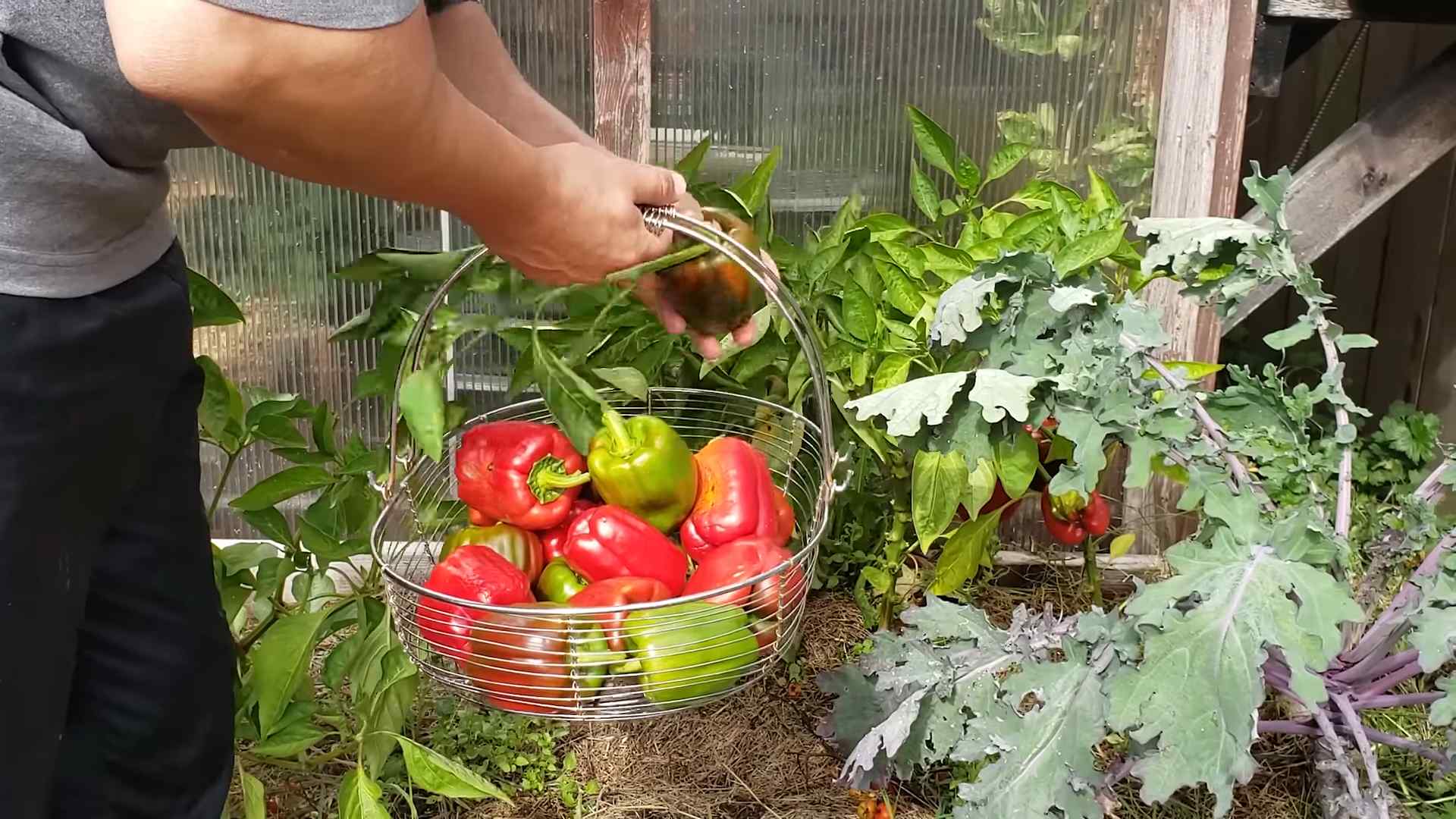
Growing Peppers Indoors: A Small Space Gardener’s Guide
Hey there, fellow plant enthusiasts! Dreaming of fresh, spicy peppers even when the weather outside is frightful? Well, you’ve come to the right place! I’m going to walk you through everything you need to know to successfully grow peppers indoors, even if you’re working with limited space. Trust me, it’s totally doable, and the reward of harvesting your own homegrown peppers is absolutely worth it. Let’s get started!
Choosing the Right Pepper Varieties
First things first, not all peppers are created equal when it comes to indoor growing. Some varieties are naturally more compact and better suited for containers. Here are a few of my personal favorites that thrive indoors:
* ‘Thai Hot’ Peppers: These little guys pack a punch and stay relatively small, making them perfect for windowsills or small grow tents.
* ‘Jalapeño’ Peppers: A classic choice! Look for compact varieties like ‘Early Jalapeño’ or ‘TAM Jalapeño’ for best results.
* ‘Sweet Banana’ Peppers: If you prefer something milder, sweet banana peppers are a great option. They’re productive and relatively easy to grow.
* ‘Poblano’ Peppers: These are larger than the others, but if you have a bit more space, they are great for stuffing!
* ‘Mini Bell’ Peppers: These are adorable and come in a variety of colors. They are perfect for salads and snacking.
Important Tip: Always check the plant’s mature size before purchasing seeds or seedlings to ensure it will fit comfortably in your growing space.
Setting Up Your Indoor Pepper Garden
Okay, now that we’ve got our pepper varieties sorted, let’s talk about creating the ideal environment for them to flourish.
* Lighting: Peppers need a LOT of light – at least 6-8 hours of direct sunlight per day. If you don’t have a sunny south-facing window, you’ll definitely need to invest in grow lights.
* LED Grow Lights: These are energy-efficient and provide the full spectrum of light that peppers need. I personally use LED strip lights and have had great success.
* Fluorescent Grow Lights: These are a more affordable option, but they may not be as efficient as LEDs.
* Containers: Choose pots that are at least 8-12 inches in diameter. Make sure they have drainage holes to prevent waterlogging.
* Fabric Pots: I’m a big fan of fabric pots because they allow for better aeration and drainage.
* Plastic Pots: These are a more budget-friendly option, but make sure to choose dark-colored pots to prevent algae growth.
* Soil: Use a well-draining potting mix specifically formulated for vegetables. Avoid using garden soil, as it can compact and suffocate the roots.
* My Go-To Mix: I like to mix equal parts of potting mix, perlite, and compost for a nutrient-rich and well-draining medium.
* Temperature: Peppers thrive in warm temperatures, ideally between 70-80°F (21-27°C).
* Humidity: While peppers don’t need extremely high humidity, they do appreciate a little moisture in the air. You can increase humidity by using a humidifier or placing a tray of water near your plants.
Step-by-Step Planting Guide
Alright, let’s get our hands dirty! Here’s how to plant your pepper seeds or seedlings:
1. Starting from Seed (Optional): If you’re starting from seed, sow them indoors 6-8 weeks before the last expected frost.
* Fill a seed tray or small pots with seed-starting mix.
* Sow the seeds about ¼ inch deep.
* Keep the soil moist and warm (around 75-80°F) until germination. A heat mat can be helpful.
* Once the seedlings have a few sets of true leaves, transplant them into larger pots.
2. Preparing Your Container: Fill your chosen container with your well-draining potting mix, leaving about an inch of space at the top.
3. Planting Your Seedling: Gently remove the seedling from its nursery pot. Loosen the roots slightly if they are tightly bound.
4. Placing the Seedling: Place the seedling in the center of the container, making sure the top of the root ball is level with the soil surface.
5. Filling In: Fill in the remaining space with potting mix, gently patting it down around the seedling.
6. Watering: Water thoroughly until water drains out of the drainage holes.
7. Location: Place your newly planted pepper plant in a sunny location or under grow lights.
Caring for Your Indoor Pepper Plants
Now that your peppers are planted, it’s time to provide them with the care they need to thrive.
1. Watering: Water your pepper plants when the top inch of soil feels dry to the touch. Avoid overwatering, as this can lead to root rot.
* The Finger Test: Stick your finger into the soil to check for moisture. If it feels dry, it’s time to water.
2. Fertilizing: Peppers are heavy feeders, so you’ll need to fertilize them regularly.
* Start with a Balanced Fertilizer: Use a balanced fertilizer (e.g., 10-10-10) every 2-3 weeks.
* Switch to a Bloom Booster: Once your plants start to flower, switch to a fertilizer that is higher in phosphorus (the middle number) to encourage fruit production.
* Organic Options: Fish emulsion and seaweed extract are great organic fertilizer options.
3. Pruning: Pruning can help to improve air circulation and encourage bushier growth.
* Pinch Off Suckers: Remove any suckers (small shoots that grow from the base of the plant) to direct energy towards fruit production.
* Remove Yellowing Leaves: Prune away any yellowing or dead leaves to prevent the spread of disease.
4. Pollination: Indoor peppers may need a little help with pollination, as there are no bees or wind to do the job.
* Hand Pollination: Use a small paintbrush or cotton swab to gently transfer pollen from one flower to another.
* Shake the Plant: Gently shake the plant to release pollen.
5. Pest Control: Keep an eye out for common pests like aphids, spider mites, and whiteflies.
* Neem Oil: Neem oil is a natural insecticide that can be used to control many common pests.
* Insecticidal Soap: Insecticidal soap is another effective option for controlling pests.
* Regular Inspection: Regularly inspect your plants for signs of pests and take action immediately if you find any.
Harvesting Your Peppers
The most exciting part! Knowing when to harvest your peppers depends on the variety and your personal preference.
* Color: Most peppers will change color as they ripen. For example, jalapeños will turn from green to red.
* Firmness: Ripe peppers should be firm to the touch.
* Size: Check the seed packet or plant tag for the expected size of the mature peppers.
* Harvesting Technique: Use scissors or pruning shears to cut the peppers from the plant, leaving a small stem attached.
Troubleshooting Common Problems
Even with the best care, you may encounter some challenges along the way. Here are a few common problems and how to fix them:
* Yellowing Leaves: This can be caused by overwatering, underwatering, nutrient deficiencies, or pests. Adjust your watering schedule, fertilize your plants, and inspect them for pests.
* Blossom Drop: This is when the flowers fall off the plant without producing fruit. It can be caused by temperature stress, lack of pollination, or nutrient deficiencies. Ensure your plants are in a warm environment, hand-pollinate the flowers, and fertilize them regularly.
* Stunted Growth: This can be caused by lack of light, poor soil, or pests. Provide your plants with adequate light, use a well-draining potting mix, and inspect them for pests.
* Pest Infestations: As mentioned earlier, neem oil and insecticidal soap are effective treatments for many common pests.
Extra Tips for Success
* Rotate Your Plants: Rotate your plants regularly to ensure they receive even light exposure.
* Provide Support: As your pepper plants grow, they may need support to prevent them from toppling over. Use stakes or tomato cages to provide support.
* Keep a Journal: Keep a journal to track your progress and learn from your mistakes. Note when you planted your seeds, when you fertilized your plants, and when
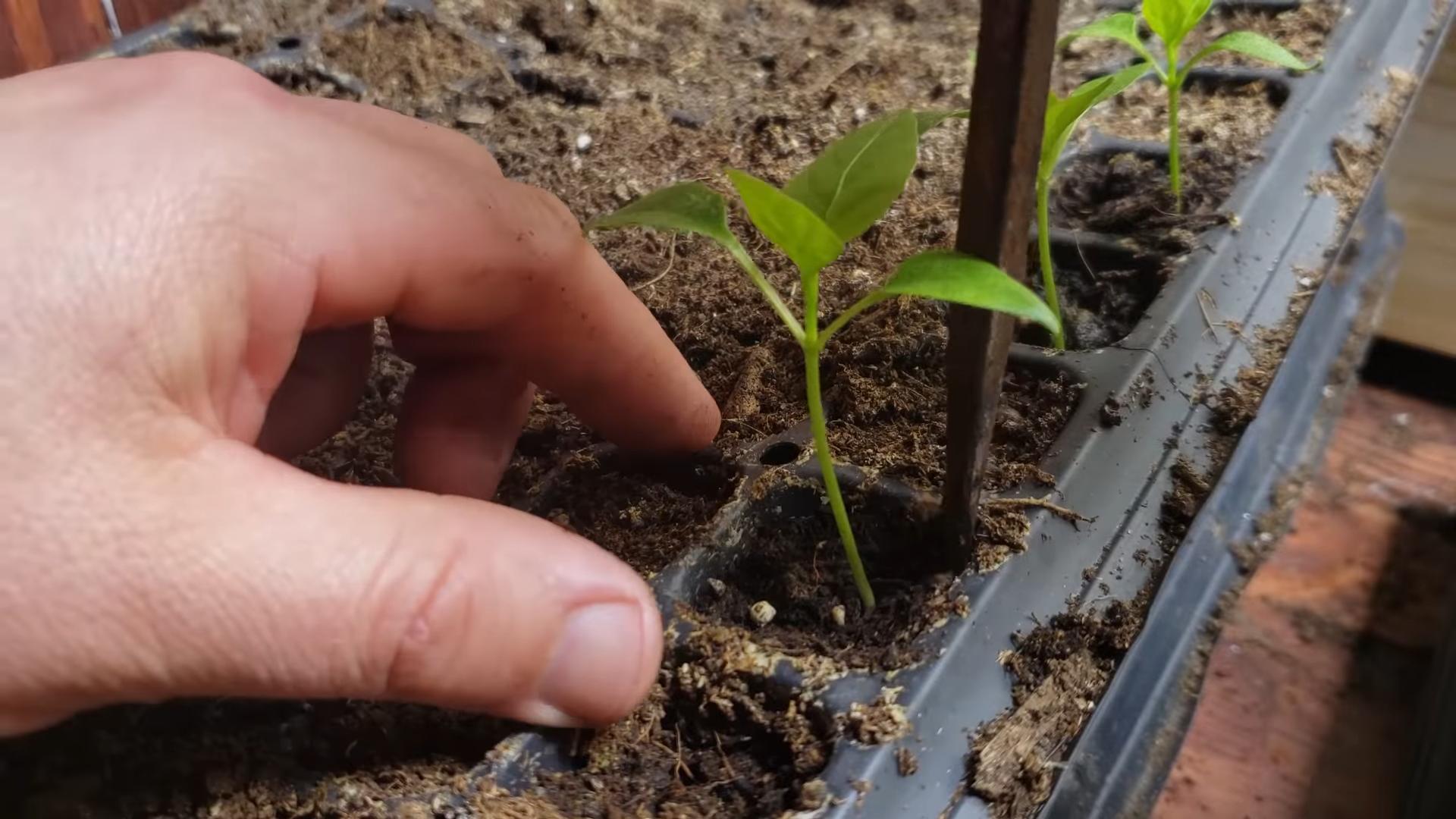
Conclusion
So, there you have it! Growing peppers indoors, even in a small space, is not only achievable but also incredibly rewarding. We’ve walked you through the essential steps, from selecting the right pepper varieties to providing optimal lighting and care. This DIY approach to cultivating your own peppers offers a unique connection to your food, allowing you to enjoy fresh, flavorful ingredients year-round, regardless of your outdoor space limitations.
Why is this a must-try? Because it empowers you to take control of your food source, reduces your reliance on store-bought produce (often shipped long distances and lacking in peak freshness), and adds a vibrant touch of green to your indoor environment. Imagine the satisfaction of harvesting your own spicy jalapenos for homemade salsa or sweet bell peppers for a colorful stir-fry, all grown right in your home.
But the possibilities don’t stop there! Feel free to experiment with different pepper varieties. Perhaps you’d like to try growing some ornamental peppers for their beautiful foliage and fiery kick, or maybe explore the world of super-hot peppers like ghost peppers or Carolina reapers (with appropriate caution, of course!). You can also experiment with different growing mediums, such as hydroponics, for a soilless approach. Consider companion planting within your indoor pepper garden. Basil, for example, is known to repel pests and improve the flavor of peppers. Marigolds are another excellent choice for pest control.
Don’t be afraid to get creative with your container choices, too. While we’ve recommended specific sizes, you can repurpose old buckets, tubs, or even grow bags to suit your aesthetic and space constraints. Just ensure that your chosen container has adequate drainage.
The key to success with growing peppers indoors is consistent care and attention. Regularly check the moisture levels of the soil, provide adequate lighting, and monitor for any signs of pests or diseases. With a little patience and dedication, you’ll be rewarded with a bountiful harvest of delicious peppers.
We encourage you to embark on this exciting journey of indoor pepper cultivation. It’s a fantastic way to connect with nature, enhance your culinary creations, and add a touch of green to your living space. And most importantly, we want to hear about your experiences! Share your tips, tricks, and photos of your indoor pepper gardens with us. Let’s build a community of indoor pepper enthusiasts and learn from each other’s successes (and occasional setbacks!). So, grab your seeds, prepare your soil, and get ready to experience the joy of growing your own peppers indoors! Let us know what you think about this **grow peppers indoors small space** guide.
Frequently Asked Questions (FAQ)
1. What are the best pepper varieties to grow indoors in a small space?
Choosing the right pepper variety is crucial for indoor success, especially when space is limited. Compact or dwarf varieties are generally the best choice. Some excellent options include:
* **Thai Peppers:** These small, prolific peppers are perfect for adding a spicy kick to your dishes. They don’t require a lot of space and produce a generous harvest.
* **Jalapenos:** A classic choice, jalapenos are relatively easy to grow indoors and offer a moderate level of heat. Look for compact varieties specifically bred for container gardening.
* **Bell Peppers (Dwarf Varieties):** While bell peppers can be larger plants, dwarf varieties like ‘Mini Bell’ or ‘Patio Bell’ are well-suited for indoor growing.
* **Poblano Peppers:** These mild peppers are great for stuffing or roasting. Choose a smaller variety to maximize your space.
* **Ornamental Peppers:** These peppers are grown for their colorful foliage and fruits, adding visual appeal to your indoor garden. They are typically compact and easy to manage.
When selecting your pepper varieties, consider your taste preferences, the amount of space you have available, and the lighting conditions in your home.
2. How much light do indoor pepper plants need?
Light is arguably the most critical factor for successful indoor pepper growing. Peppers require at least 6-8 hours of direct sunlight per day. If you don’t have a south-facing window that provides sufficient sunlight, you’ll need to supplement with artificial lighting.
Full-spectrum LED grow lights are an excellent choice for indoor pepper plants. They provide the necessary wavelengths of light for photosynthesis and are energy-efficient. Position the grow lights about 6-12 inches above the plants, and adjust the height as the plants grow.
Monitor your plants closely for signs of insufficient light, such as leggy growth (long, spindly stems) or pale leaves. If you notice these symptoms, increase the amount of light your plants are receiving.
3. What type of soil is best for growing peppers indoors?
Peppers thrive in well-draining, nutrient-rich soil. A good potting mix specifically formulated for vegetables is ideal. Avoid using garden soil, as it can be too heavy and may contain pests or diseases.
You can also create your own potting mix by combining equal parts of:
* Peat moss or coco coir (for moisture retention)
* Perlite or vermiculite (for drainage)
* Compost or aged manure (for nutrients)
Ensure that the soil is loose and airy to allow for proper root development.
4. How often should I water my indoor pepper plants?
Watering frequency will depend on several factors, including the size of the pot, the type of soil, and the temperature and humidity of your home. As a general rule, water your pepper plants when the top inch of soil feels dry to the touch.
Water thoroughly until water drains out of the bottom of the pot. Avoid overwatering, as this can lead to root rot.
During the growing season (spring and summer), you may need to water your plants more frequently than during the dormant season (fall and winter).
5. How do I fertilize my indoor pepper plants?
Peppers are heavy feeders and require regular fertilization to produce a bountiful harvest. Use a balanced fertilizer specifically formulated for vegetables, following the instructions on the label.
Start fertilizing your plants a few weeks after transplanting them into their final pots. Fertilize every 2-3 weeks during the growing season.
You can also supplement with organic fertilizers, such as compost tea or fish emulsion.
6. How do I pollinate my indoor pepper plants?
Peppers are self-pollinating, meaning they can pollinate themselves. However, indoor plants may need a little help with pollination, as there are no bees or other insects to do the job.
You can manually pollinate your pepper plants by gently shaking the plants or using a small paintbrush to transfer pollen from one flower to another.
7. How do I deal with pests and diseases on my indoor pepper plants?
Indoor pepper plants are less susceptible to pests and diseases than outdoor plants, but they can still be affected. Common pests include aphids, spider mites, and whiteflies.
Inspect your plants regularly for signs of pests or diseases. If you find any, treat them promptly with insecticidal soap or neem oil.
To prevent pests and diseases, keep your plants clean and well-ventilated. Avoid overwatering, and remove any dead or dying leaves.
8. When can I harvest my indoor peppers?
The time it takes for peppers to mature will vary depending on the variety. Generally, peppers are ready to harvest when they have reached their mature size and color.
Harvest peppers by cutting them off the plant with a sharp knife or scissors. Be careful not to damage the plant when harvesting.
9. Can I move my indoor pepper plants outdoors during the summer?
Yes, you can move your indoor pepper plants outdoors during the summer, but you need to acclimate them gradually to the outdoor conditions.
Start by placing your plants in a shady spot for a few hours each day, gradually increasing the amount of sunlight they receive over a week or two.
Bring your plants back indoors before the first frost.
10. What do I do with my pepper plants after the growing season?
Pepper plants are perennials, meaning they can live for several years. However, they are often grown as annuals in colder climates.
If you want to overwinter your pepper plants indoors, cut them back to about 6 inches tall and reduce watering and fertilization. Place them in a cool, bright location.
In the spring, repot your plants and resume regular watering and fertilization.

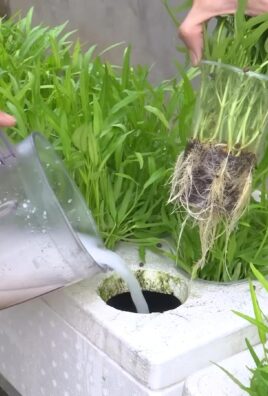
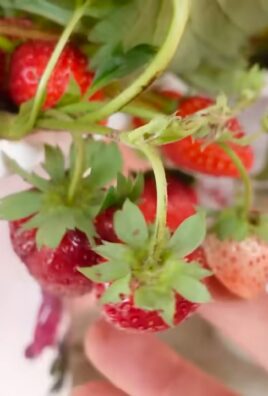
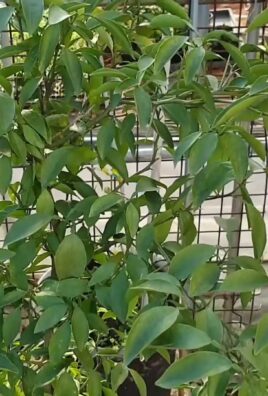
Leave a Comment